Last week, a group of seven local students took to Jesmond Old Cemetery on a sunny Saturday morning with the aim of spotting a range of North East ladybirds. Here’s what they discovered.
Ladybirds have become increasingly common in urban areas during winter and cemeteries are a great place to spot them. A national endeavour to survey these insects is currently underway with the UK Ladybird Survey and locally, in the North East, with NHSN.
In order to get a feel for the roles of NHSN Citizen Science Ambassadors, we delved into a quiet and secluded corner of Jesmond in search of a secret treasure trove of small, inconspicuous insects. Hidden away in nooks and crannies on the weathered faces of the tall, crooked headstones, hundreds of ladybirds were seen throughout the day. Most waiting for the warm touch of spring before they could finally wriggle free their six stiff legs and gorge themselves on aphids.
As we meandered through the headstones, within seconds we were met with a huge cluster of 17 plump, shiny beetles all huddled together in the arched recess of the decorated sandstone. The round carapaces, decorated with a variety of spots, belonged to Harlequin Ladybirds, or Asian Ladybirds as they are also known. These large, predatory invasive beetles are widespread across the UK and can come in a range of different colours and morphologies. Luckily, they can often be identified quickly by their larger than usual size. This was our first species!
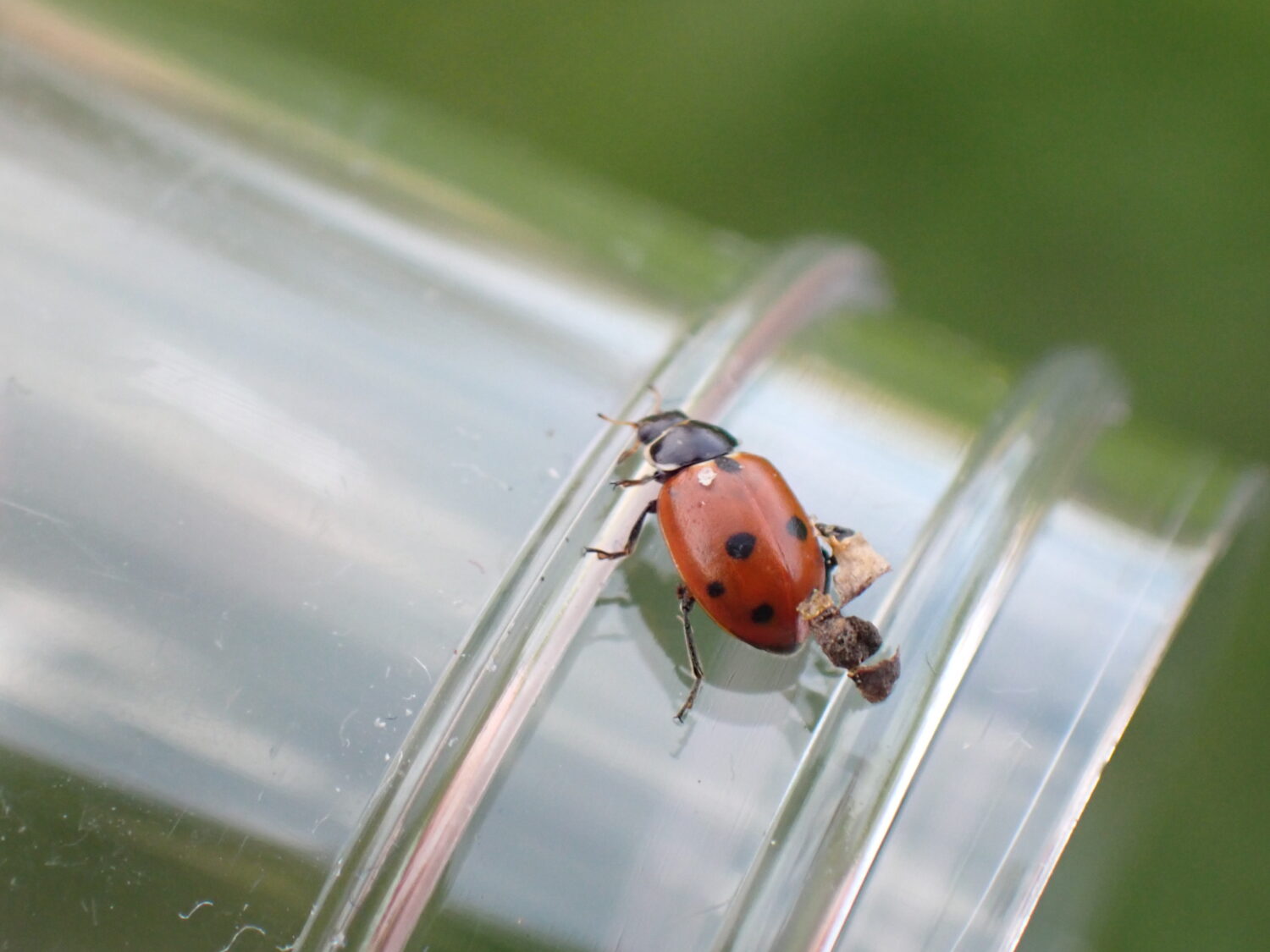
Adonis’ Ladybird © James Common 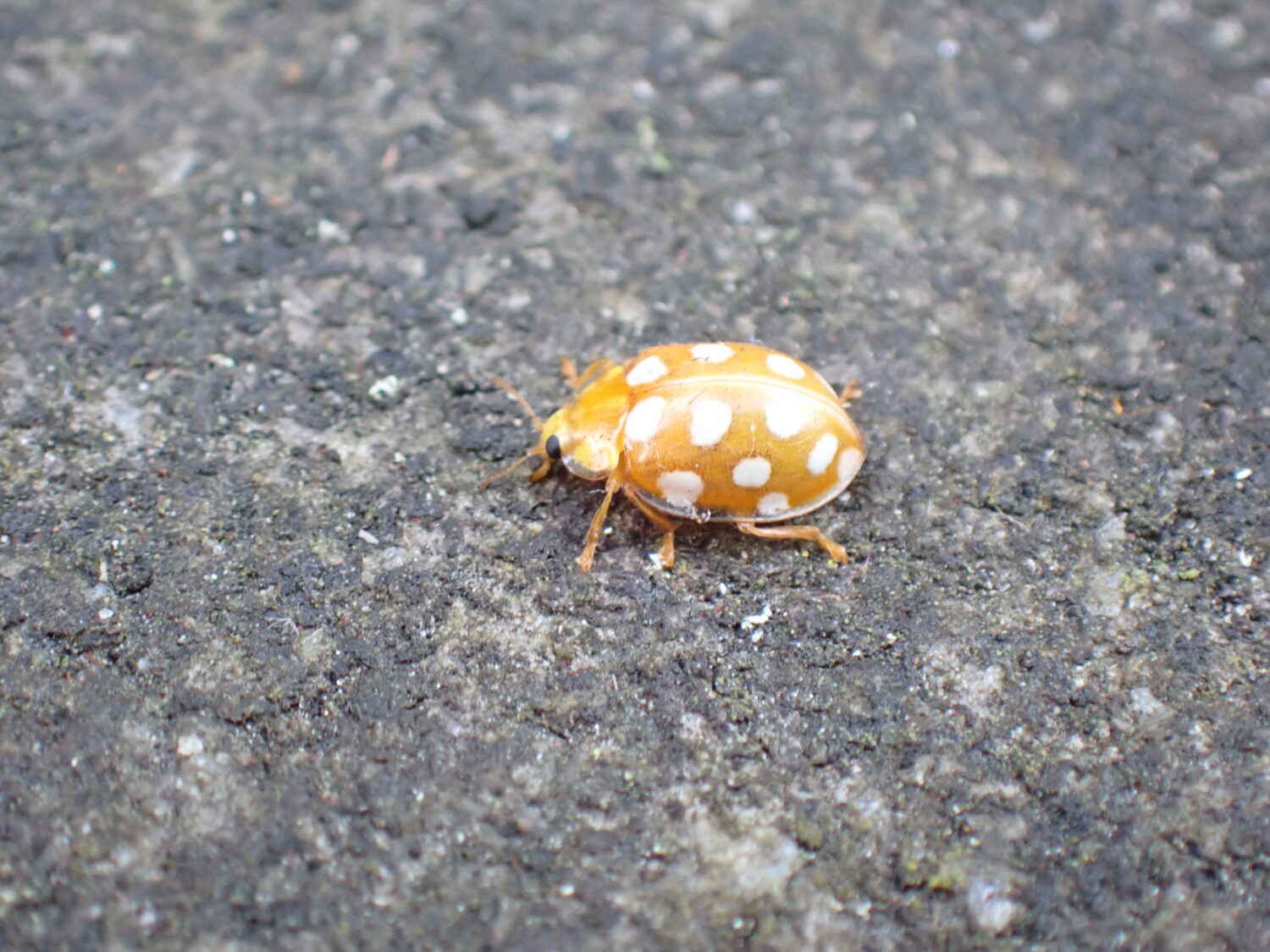
Orange Ladybird © James Common
Just a short walk away we were happy to discover another species, the much smaller Pine Ladybird, almost fully black except for two very dark red spots at the rear and two coma-like red markings near its front. Two down already. They started coming thick and fast, every new headstone holding a new bounty of species. Cream Spot, 2-spot and 10-spot Ladybirds, all rather self-explanatory in appearance, were found just a minutes’ walk along the trail. It is important to note that despite their names, often the varying morphology in these species can often render identification difficult, with some 10-spots having many more or far fewer than 10 spots.
We then decided it was time to survey the cemetery properly, like real scientists. So, we split up into pairs, divided the area into four sections and began our study along the rows of gravestones, being careful to watch our footing and be respectful of the residents. A total of 64 harlequins, 4 2-spots, 12 pine, 9 10-spot and 5 cream spot ladybirds were identified in one area alone. As the mornings hunting drew to a close, we were treated to a rather rare find for the North East, an Adonis’ Ladybird. By the end, a total of 9 species were identified in just an hour and a half, some of which, including the 18-Spot and Cream-streaked Ladybirds, are particularly scarce in the North East.
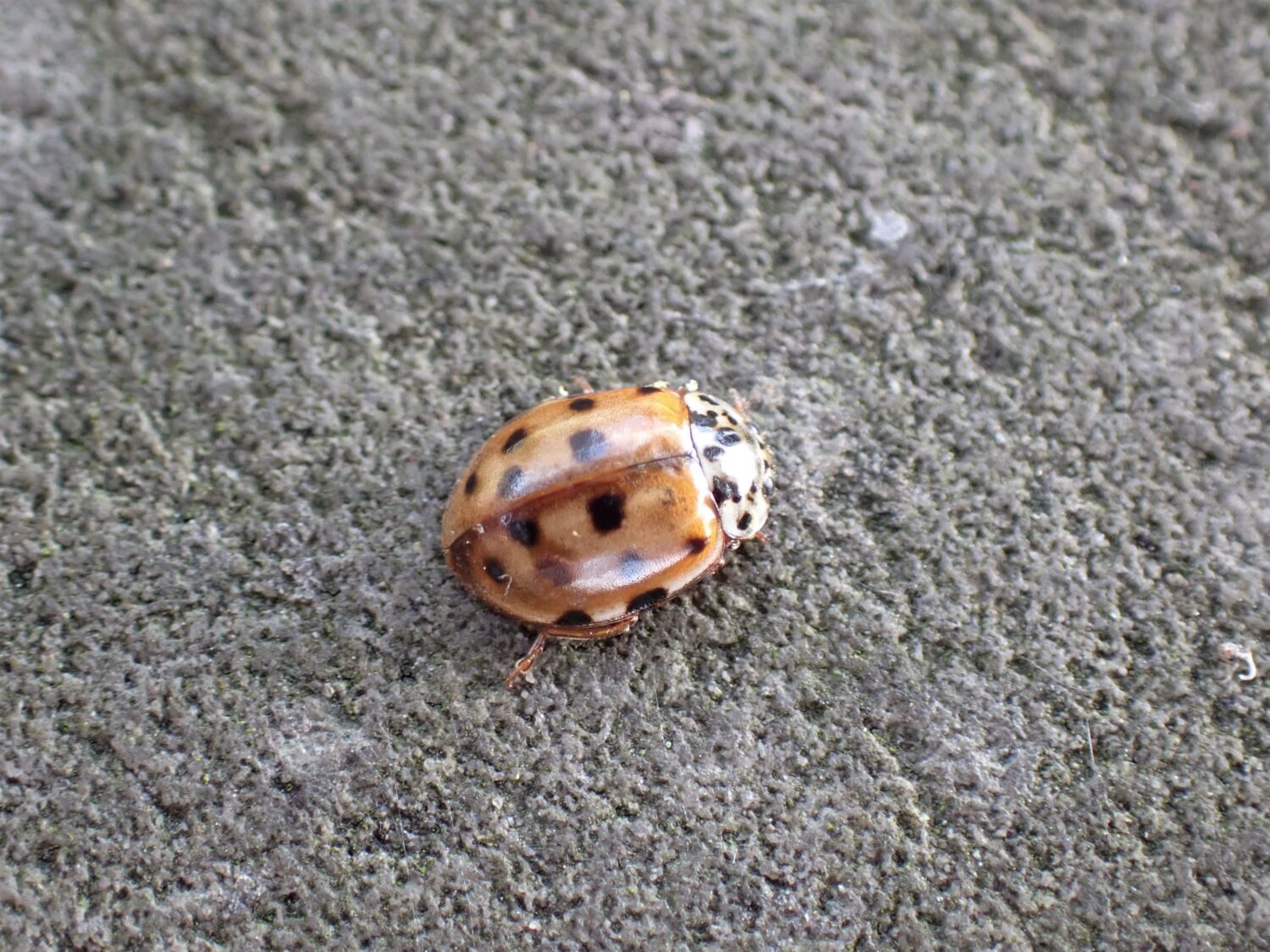
Cream-streaked Ladybird © James Common 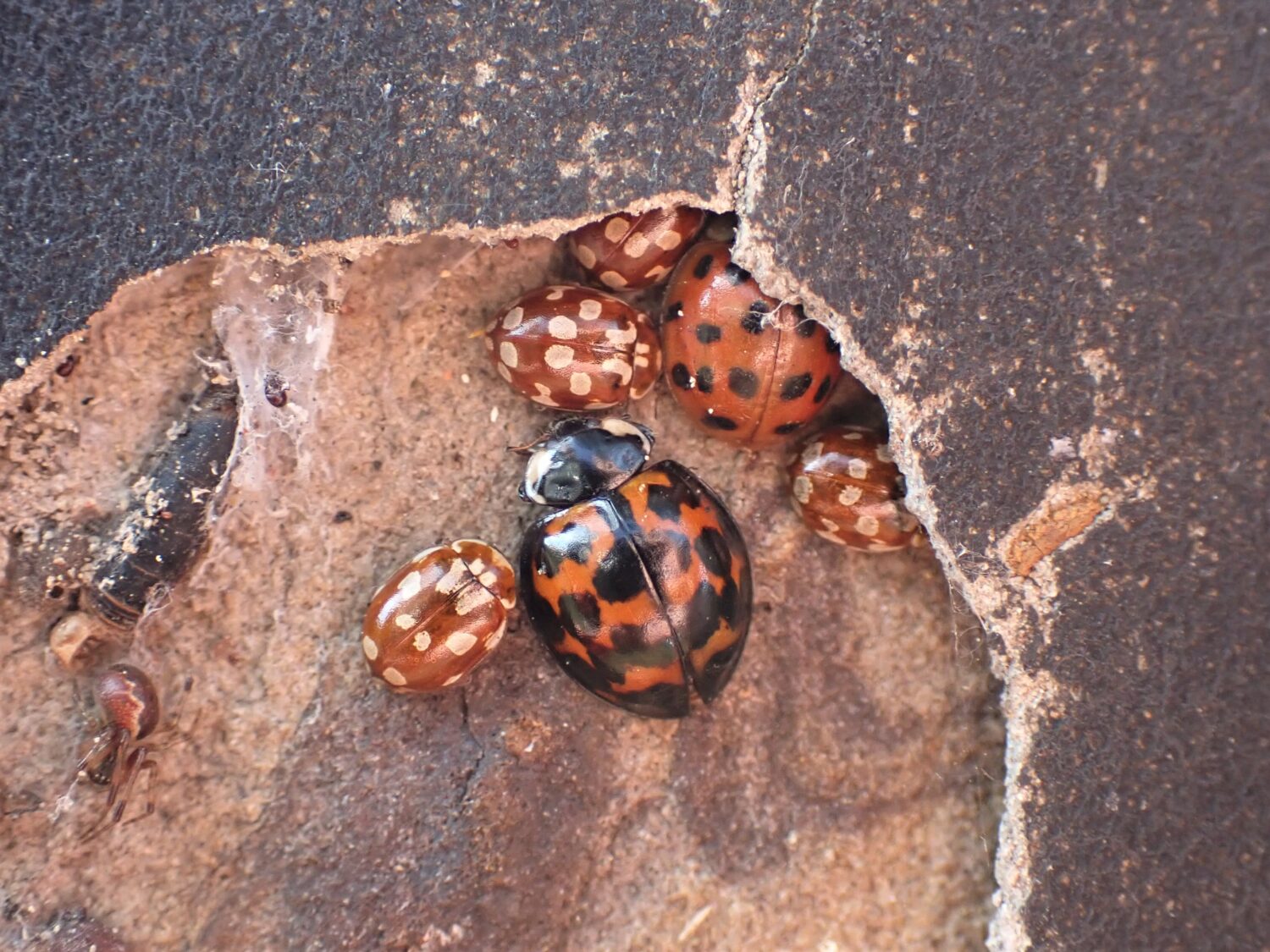
18-Spot Ladybird © James Common
Some may be surprised to learn that Ladybirds can be found during the winter, but once you know where to look, you can’t help but stumble across these charming bugs in small spaces and gouged-out grooves. There are 46 resident species of Coccinellidae in Great Britain, but only 26 of these resemble the stereotypical ladybird in appearance. They come in a range of spots and sizes and even if identification can sometimes be difficult, there’s always someone who will be able to help with the trickier IDs. So, get out there and get spotting these spotty critters.
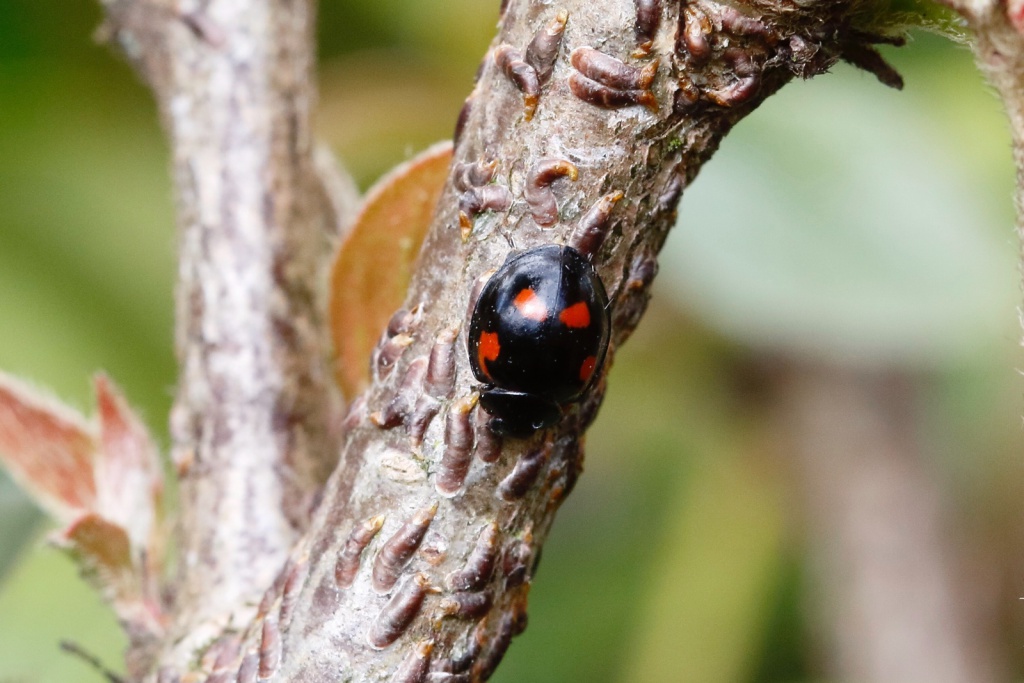
Share your discoveries
Urban or rural, beginner or expert, we need your help to record ladybirds across the North East.
Your records can add to our understanding of ladybirds in the region and inform conservation and monitoring efforts.
Taking part is easy and every record counts, wherever you live in the North East. Records of all ladybird species are welcome.